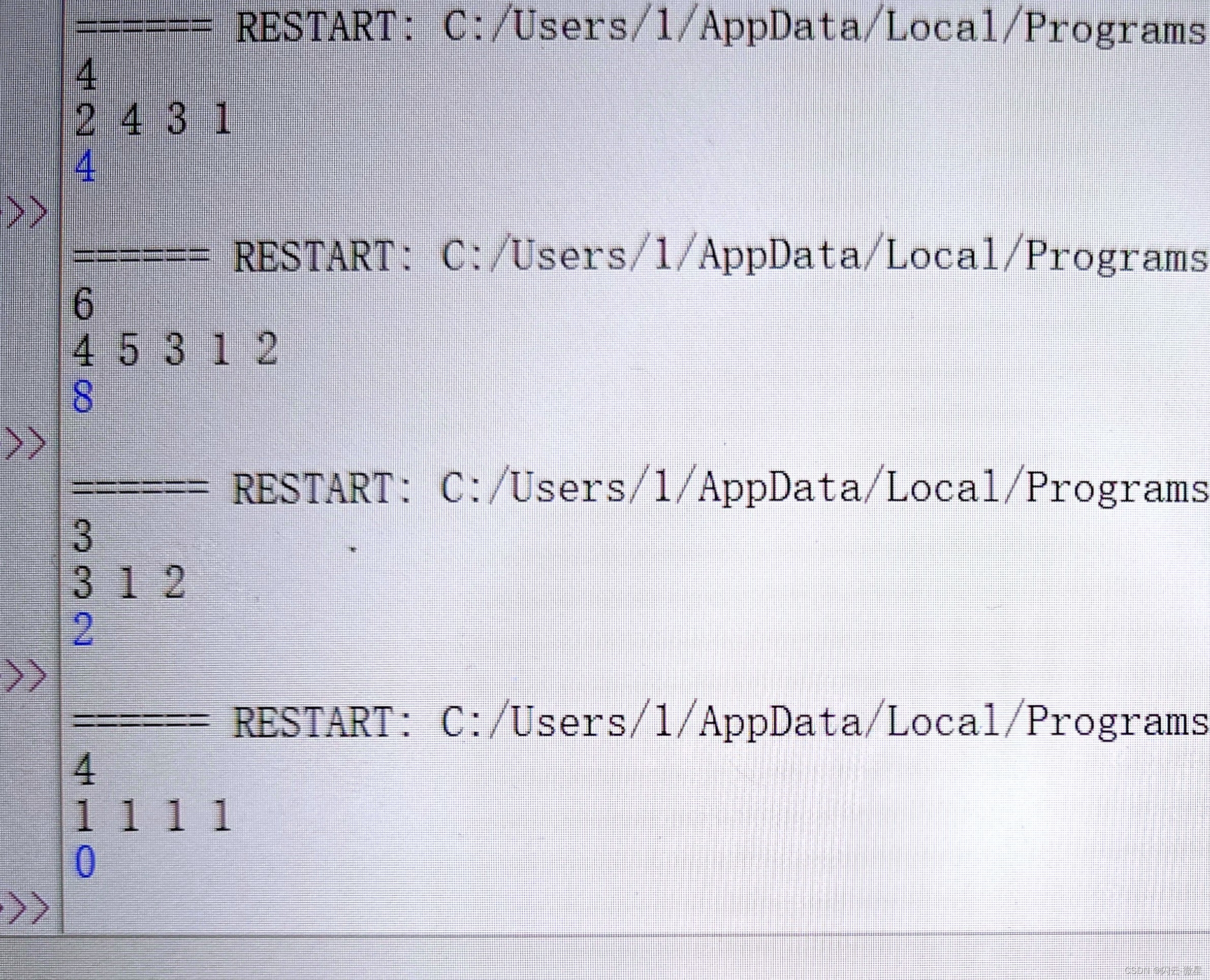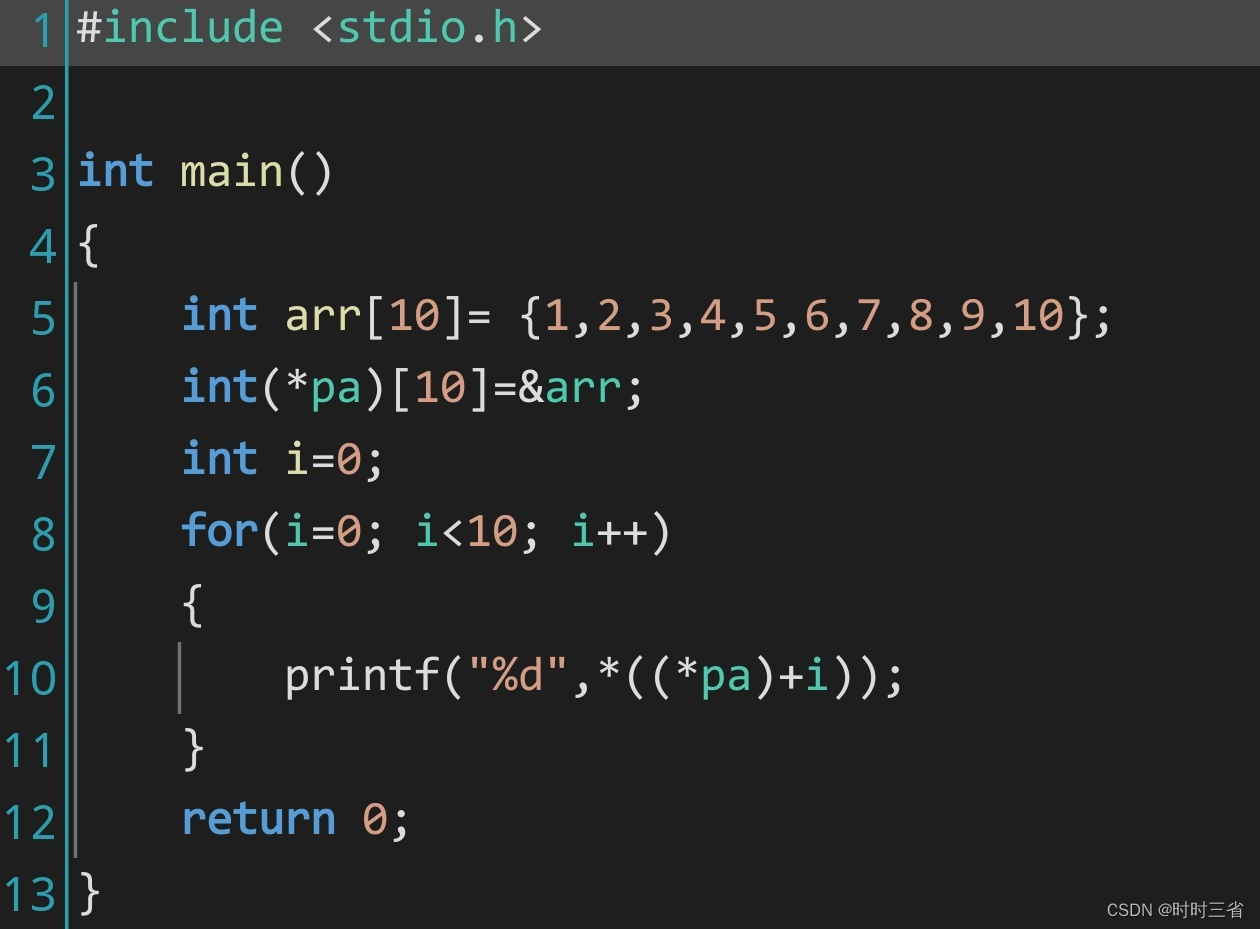前言:上一章记录了部署k8s常用的两个方式,这一章就简单一些,整理一下k8s资源对象的配置和管理命令。
1、集群状态检查
前天搭建的环境,然后关机了两天今天开启后第一时间需要检查集群环境是否正常
[root@k8s-master1 ~]# kubectl get node
NAME STATUS ROLES AGE VERSION
k8s-master1 Ready master 2d17h v1.19.1
k8s-node1 Ready <none> 2d17h v1.19.1
k8s-node2 Ready <none> 2d17h v1.19.1[root@k8s-master1 ~]# kubectl get pod -n kube-system
NAME READY STATUS RESTARTS AGE
coredns-f9fd979d6-f8rxv 1/1 Running 1 2d17h
coredns-f9fd979d6-frrvc 1/1 Running 1 2d17h
etcd-k8s-master1 1/1 Running 1 2d17h
kube-apiserver-k8s-master1 1/1 Running 1 2d17h
kube-controller-manager-k8s-master1 1/1 Running 1 2d17h
kube-flannel-ds-c576q 1/1 Running 1 2d17h
kube-flannel-ds-hxkww 1/1 Running 2 2d17h
kube-flannel-ds-nm9b2 1/1 Running 2 2d17h
kube-proxy-96cnh 1/1 Running 1 2d17h
kube-proxy-j5gbf 1/1 Running 1 2d17h
kube-proxy-pz2l2 1/1 Running 1 2d17h
kube-scheduler-k8s-master1 1/1 Running 1 2d17h集群状态正常继续今天的操作
常用检查命令
查看service的信息:
[root@k8s-master1 ~]# kubectl get service在不同的namespace里面查看service:
[root@k8s-master1 ~]# kubectl get service -n kube-system
-n:namespace名称空间查看所有名称空间内的pod:
[root@k8s-master1 ~]# kubectl get pods --all-namespaces同时查看多种资源对象的信息:
[root@k8s-master1 ~]# kubectl get pod,service -n kube-system查看主节点:
[root@k8s-master1 ~]# kubectl cluster-infoapi查询:(写yaml要用)
[root@k8s-master1 ~]# kubectl api-versions也可以查看pod的信息
[root@k8s-master1 ~]# kubectl describe node k8s-node12、命名空间管理
在 Kubernetes(K8s)中,Namespace(命名空间)就像是一个虚拟的隔间,用于将集群中的资源进行逻辑上的分区。通过创建不同的 Namespace,可以有效地管理和隔离资源,实现更高效的资源管理和权限控制。
Namespace 的作用可以形象地比喻为以下几种场景:
-
资源隔离:想象一下一个大型办公楼,每个部门都有自己的独立办公室。不同的部门(Namespace)在自己的办公室(Namespace)里工作,互不干扰。这样,不同部门的资源(如服务、Pod)就不会相互碰撞或冲突,保持清晰和有序。
-
资源管理:在办公楼中,所有财务部门的文件、设备和人员都集中在一个区域。类似地,将相关的资源(如应用程序、数据库)放在同一个 Namespace 中,使管理和监控变得更加简单和高效。
-
权限控制:在办公楼中,门禁系统可以限制哪些人可以进入哪些区域。通过 Kubernetes 的 RBAC(基于角色的访问控制),你可以设置不同的权限,让只有特定角色的人能够访问或管理特定的 Namespace,就像门禁系统控制访问一样。
-
环境隔离:办公楼的不同楼层可能被设计成不同的用途:一层用于开发,二层用于测试,三层用于生产。类似地,Kubernetes 中可以创建不同的 Namespace 来分别部署开发、测试和生产环境,确保各个环境之间相互隔离,提升安全性和稳定性。
查看命名空间
[root@k8s-master1 ~]# kubectl get namespace
NAME STATUS AGE
default Active 2d17h
kube-flannel Active 2d17h
kube-node-lease Active 2d17h
kube-public Active 2d17h
kube-system Active 2d17h[root@k8s-master1 ~]# kubectl get ns
NAME STATUS AGE
default Active 2d17h
kube-flannel Active 2d17h
kube-node-lease Active 2d17h
kube-public Active 2d17h
kube-system Active 2d17h创建命名空间
使用yaml文件创建ns
[root@k8s-master1 ~]# mkdir namespace.yaml.d
[root@k8s-master1 ~]# cd namespace.yaml.d/
[root@k8s-master1 namespace.yaml.d]# vim namespace1.yaml
[root@k8s-master1 namespace.yaml.d]# cat namespace1.yaml
---
apiVersion: v1
kind: Namespace #设定创建资源对象类型
metadata: #元数据name: ns-example #ns名字labels:this_ns_name: name_is_ns-example #标签创建ns
[root@k8s-master1 namespace.yaml.d]# kubectl apply -f namespace1.yaml
namespace/ns-example created查看ns
[root@k8s-master1 namespace.yaml.d]# kubectl get ns
NAME STATUS AGE
default Active 2d18h
kube-flannel Active 2d17h
kube-node-lease Active 2d18h
kube-public Active 2d18h
kube-system Active 2d18h
ns-example Active 15s
[root@k8s-master1 namespace.yaml.d]# kubectl get ns ns-example
NAME STATUS AGE
ns-example Active 46s
[root@k8s-master1 namespace.yaml.d]# kubectl describe namespace ns-example
Name: ns-example
Labels: this_ns_name=name_is_ns-example
Annotations: <none>
Status: ActiveNo resource quota.No LimitRange resource.删除ns[root@k8s-master1 namespace.yaml.d]# kubectl delete -f namespace1.yaml[root@k8s-master prome]# kubectl delete namespace ns-example一个yaml/yml内可以写两个资源对象
[root@k8s-master1 namespace.yaml.d]# vim namespace2.yml
[root@k8s-master1 namespace.yaml.d]# cat namespace2.yml
---
apiVersion: v1
kind: Namespace
metadata: name: ns-examplelabels:this_ns_name: name_is_ns-example
---
apiVersion: v1
kind: Namespace
metadata: name: ns-example2labels:this_ns_name2: name_is_ns-example
[root@k8s-master1 namespace.yaml.d]# kubectl apply -f namespace2.yml
namespace/ns-example created
namespace/ns-example2 created
[root@k8s-master1 namespace.yaml.d]# kubectl get ns
NAME STATUS AGE
default Active 2d18h
kube-flannel Active 2d18h
kube-node-lease Active 2d18h
kube-public Active 2d18h
kube-system Active 2d18h
ns-example Active 6s
ns-example2 Active 6s3、pod管理
3.1、创建pod
任务:发布第一个容器化应用
- 制作镜像:作为应用开发者,你首先需要制作容器镜像。
- 组织镜像:将镜像按 Kubernetes 的规范整理,并提交上去。
Kubernetes 项目能"认识"的方式:
Kubernetes 不推荐直接使用命令行运行容器,而是使用 YAML 或 JSON 配置文件来定义和管理容器。你需要将容器的定义、参数和配置记录在 YAML 文件中,然后使用以下指令运行:
# kubectl create -f 配置文件
好处:
- 文件记录了 Kubernetes 运行了什么,便于后续查看。
使用 YAML 创建 Pod:
YAML 文件在 Kubernetes 中对应 API 对象。填写字段并提交,Kubernetes 会根据定义创建容器或其他 API 资源。
编写yaml
[root@k8s-master1 pod.yaml.d]# vim pod1.yml
[root@k8s-master1 pod.yaml.d]# cat pod1.yml
---
apiVersion: v1
kind: Pod
metadata:name: websitlabels:this-pod-name: this-is-websit
spec:containers:- name: name-of-websit-nginximage: linuxserver/nginxports:- containerPort: 80#############注意事项#########
自定义字段命名规则( DNS-1123 标签):必须只包含小写字母(a-z)、数字(0-9)和连字符(-)。必须以字母或数字开头和结尾。不能包含大写字母或其他字符。
创建pod
[root@k8s-master1 pod.yaml.d]# kubectl apply -f pod1.yml
pod/websit created
[root@k8s-master1 pod.yaml.d]# kubectl get pod
NAME READY STATUS RESTARTS AGE
websit 1/1 Running 0 9s
这里有一个需要了解的点:
pod的准备状况指的是Pod是否准备就绪以接收请求,Pod的准备状况取决于容器,即所有容器都准备就绪了,Pod才准备就绪。这时候kubernetes的代理服务才会添加Pod作为后端,而一旦Pod的准备状况变为false(至少一个容器的准备状况为false),kubernetes会将Pod从代理服务的分发后端移除,即不会分发请求给该Pod。
一个pod刚被创建的时候是不会被调度的,因为没有任何节点被选择用来运行这个pod。调度的过程发生在创建完成之后,但是这个过程一般很快,所以通常看不到pod是处于unscheduler状态的除非创建的过程遇到了问题。
pod被调度之后,分配到指定的节点上运行,这时候,如果该节点没有所需要的image,那么将会自动从默认的Docker Hub上pull指定的image,一切就绪之后,看到pod是处于running状态了
3.2、pod管理
查看pod
[root@k8s-master1 pod.yaml.d]# kubectl get pod -o wide
NAME READY STATUS RESTARTS AGE IP NODE NOMINATED NODE READINESS GATES
websit 1/1 Running 0 4m5s 10.244.1.2 k8s-node1 <none> <none>#在k8s看来创建了一个pod,在node1上使用docker ps可以看到新建的容器#这里能看到pod的ip,可以尝试访问查看pod的详细信息
[root@k8s-master1 pod.yaml.d]# kubectl describe pod websit -n 命名空间
也可以使用yaml导出
[root@k8s-master1 pod.yaml.d]# kubectl get pod websit -o yaml -n default
进入pod
[root@k8s-master1 pod.yaml.d]# kubectl exec -it websit /bin/sh删除pod
[root@k8s-master1 pod.yaml.d]# kubectl delete pod website
[root@k8s-master1 pod.yaml.d]# kubectl delete -f pod1.yml 批量删除用法
[root@k8s-master1 pod.yaml.d]# kubectl delete pod --all
[root@k8s-master1 pod.yaml.d]# kubectl delete pod pod名1 pod名2补充:
kubectl create 和 kubectl apply 是两个用于管理 Kubernetes 资源的命令,但它们在处理资源的方式上有一些关键区别。
kubectl create功能:用于创建新的资源对象。用法:kubectl create -f <file.yaml>行为:只适用于创建资源。它不会对已经存在的资源进行更新。如果你需要更新资源,你必须首先删除现有资源,然后重新创建。例如,如果你修改了 YAML 文件中的配置,你需要先使用 kubectl delete -f <file.yaml> 删除现有的资源,然后使用 kubectl create -f <file.yaml> 重新创建。kubectl apply功能:用于创建或更新资源对象。用法:kubectl apply -f <file.yaml>行为:创建:如果资源不存在,apply 会创建它。更新:如果资源已经存在,apply 会自动检测到 YAML 文件中的更改,并更新现有资源。这意味着你可以修改 YAML 文件,然后再次运行 kubectl apply -f <file.yaml>,Kubernetes 会处理更新,无需删除资源。
pod的hosts解析
临时创建,删除容器后重新创建失效
操作方式:进入pod内部编辑hosts文件
永久创建:修改yaml/yml文件
操作方式如下
[root@k8s-master1 pod.yaml.d]# kubectl delete -f pod1.yml
pod "websit" deleted
[root@k8s-master1 pod.yaml.d]# vim pod1.yml
[root@k8s-master1 pod.yaml.d]# cat pod1.yml
---
apiVersion: v1
kind: Pod
metadata:name: websitlabels:this-pod-name: this-is-websit
spec:containers:- name: name-of-websit-nginximage: linuxserver/nginxports:- containerPort: 80hostAliases:- ip: "192.168.188.101"hostnames:- "k8s-master"- "su-zhu-ji"- "www.master.com"- ip: "192.168.188.102"hostnames:- "k8s-node1"- "node-node-1"- "www.node1.com"根据此文件创建pod,完成后进入容器,效果如下
[root@k8s-master1 pod.yaml.d]# kubectl apply -f pod1.yml
pod/websit created
[root@k8s-master1 pod.yaml.d]# kubectl exec -it websit /bin/sh
kubectl exec [POD] [COMMAND] is DEPRECATED and will be removed in a future version. Use kubectl exec [POD] -- [COMMAND] instead.
root@websit:/# cat /etc/hosts
# Kubernetes-managed hosts file.
127.0.0.1 localhost
::1 localhost ip6-localhost ip6-loopback
fe00::0 ip6-localnet
fe00::0 ip6-mcastprefix
fe00::1 ip6-allnodes
fe00::2 ip6-allrouters
10.244.1.5 websit# Entries added by HostAliases.
192.168.188.101 k8s-master su-zhu-ji www.master.com
192.168.188.102 k8s-node1 node-node-1 www.node1.com
root@websit:/# ping www.master.com
PING www.master.com (192.168.188.101): 56 data bytes
64 bytes from 192.168.188.101: seq=0 ttl=63 time=0.304 ms
64 bytes from 192.168.188.101: seq=1 ttl=63 time=0.387 ms
64 bytes from 192.168.188.101: seq=2 ttl=63 time=0.269 ms
^C
--- www.master.com ping statistics ---
3 packets transmitted, 3 packets received, 0% packet loss
round-trip min/avg/max = 0.269/0.320/0.387 ms
root@websit:/# 3.3、pod生命周期
常见状态:
- Pending:此状态表示Pod 的 YAML 文件已经提交给了 Kubernetes,API 对象已经被创建并保存在 Etcd 当中(准备状态)。但这个 Pod 里有些容器因为某种原因而不能被顺利创建。比如,调度不成功。
- Running:此状态表示Pod 已经调度成功,跟一个具体的节点绑定。它包含的容器都已经创建成功,并且至少有一个正在运行中。(只有这个状态是正常的)
- Succeeded:此状态表示 Pod 里的所有容器都正常运行完毕,并且已经退出了。这种情况在运行一次性任务时最为常见。
- Failed:此状态表示 Pod 里至少有一个容器以不正常的状态(非 0 的返回码)退出。这个状态的出现,意味着你得想办法 Debug 这个容器的应用,比如查看 Pod 的 Events 和日志。
- Unknown:这是一个异常状态(未知状态),表示 Pod 的状态不能持续地被 kubelet 汇报给 kube-apiserver这很有可能是主从节点(Master 和 Kubelet)间的通信出现了问题
其他状态:
CrashLoopBackOff: 容器退出,kubelet正在将它重启
InvalidImageName: 无法解析镜像名称
ImageInspectError: 无法校验镜像
ErrImageNeverPull: 策略禁止拉取镜像
ImagePullBackOff: 正在重试拉取
RegistryUnavailable: 连接不到镜像中心
ErrImagePull: 通用的拉取镜像出错
CreateContainerConfigError: 不能创建kubelet使用的容器配置
CreateContainerError: 创建容器失败
m.internalLifecycle.PreStartContainer 执行hook报错
RunContainerError: 启动容器失败
PostStartHookError: 执行hook报错
ContainersNotInitialized: 容器没有初始化完毕
ContainersNotReady: 容器没有准备完毕
ContainerCreating:容器创建中
PodInitializing:pod 初始化中
DockerDaemonNotReady:docker还没有完全启动
NetworkPluginNotReady: 网络插件还没有完全启动
4、投射数据卷 Projected Volume
Projected Volume 是 Kubernetes v1.11 之后引入的新特性,类似于 Docker 中的映射卷(docker run -v)。
在 Kubernetes 中,有几种特殊的 Volume 不是为了存放容器数据,也不是用来进行容器和宿主机之间的数据交换,而是为了为容器提供预先定义好的数据。从容器的角度来看,这些 Volume 里的信息仿佛是被 Kubernetes "投射"(Project)进入容器当中的。
Kubernetes 支持的 Projected Volume 包括四种类型(这些在k8s中都被看做资源对象):
- Secret
- ConfigMap
- Downward API
- ServiceAccount
4.1、secret
secret介绍:
- secret用来保存小片敏感数据的k8s资源对象,例如密码,token,或者秘钥。这类数据当然也可以存放在Pod或者镜像中,但是放在Secret中是为了更方便的控制如何使用数据,并减少暴露的风险。
- 用户可以创建自己的secret,系统也会有自己的secret。
- Pod需要先引用才能使用某个secret
pod使用secre的方式:
- 內建的Secrets::由ServiceAccount创建的API证书附加的秘钥k8s自动生成的用来访问apiserver的Secret,所有Pod会默认使用这个Secret与apiserver通信

- 创建自己的Secret:使用kubectl create secret命令或yaml文件创建Secret
4.1.1、创建secret
命令创建secret:
[root@k8s-master1 ~]# echo -n 'admin' > username.txt
[root@k8s-master1 ~]# echo -n 'Liumuquan@123' > password.txt
[root@k8s-master1 ~]# kubectl create secret generic db-user-pass --from-file=username.txt --from-file=password.txt
secret/db-user-pass created
[root@k8s-master1 ~]# kubectl get secret
NAME TYPE DATA AGE
db-user-pass Opaque 2 3s
default-token-l87r2 kubernetes.io/service-account-token 3 5d17h查看详细信息[root@k8s-master1 ~]# kubectl describe secret db-user-pass
Name: db-user-pass
Namespace: default
Labels: <none>
Annotations: <none>Type: OpaqueData
====
password.txt: 13 bytes
username.txt: 5 bytes[root@k8s-master1 ~]# kubectl get secret db-user-pass -o yaml
apiVersion: v1
data:password.txt: TGl1bXVxdWFuQDEyMw==username.txt: YWRtaW4=
kind: Secret
metadata:creationTimestamp: "2024-08-20T10:15:04Z"managedFields:- apiVersion: v1fieldsType: FieldsV1fieldsV1:f:data:.: {}f:password.txt: {}f:username.txt: {}f:type: {}manager: kubectl-createoperation: Updatetime: "2024-08-20T10:15:04Z"name: db-user-passnamespace: defaultresourceVersion: "70826"selfLink: /api/v1/namespaces/default/secrets/db-user-passuid: fddaf0fd-96ac-461c-88df-f301a8dcbd08
type: Opaque对data选项进行解码
[root@k8s-master1 ~]# echo TGl1bXVxdWFuQDEyMw== | base64 --decode
Liumuquan@123yaml创建secret:
明文显示容易暴露,先转码,再写入文件
[root@k8s-master1 ~]# echo -n "admin" | base64
YWRtaW4=
[root@k8s-master1 ~]# echo -n "123456" | base64
MTIzNDU2
[root@k8s-master1 ~]# mkdir secret.yaml.d
[root@k8s-master1 ~]# cd secret.yaml.d/
[root@k8s-master1 secret.yaml.d]# vim secret1.yaml
[root@k8s-master1 secret.yaml.d]# cat secret1.yaml
---
apiVersion: v1
kind: Secret
metadata:name: mysecret
type: Opaque
data:username: YWRtaW4=password: MTIzNDU2
[root@k8s-master1 secret.yaml.d]# kubectl apply -f secret1.yaml
secret/mysecret created
查看secret
[root@k8s-master1 secret.yaml.d]# kubectl get secrets
NAME TYPE DATA AGE
db-user-pass Opaque 2 22m
default-token-l87r2 kubernetes.io/service-account-token 3 5d17h
mysecret Opaque 2 10s
[root@k8s-master1 secret.yaml.d]# kubectl get secret mysecret -o yaml -n default
apiVersion: v1
data:password: MTIzNDU2username: YWRtaW4=
kind: Secret
metadata:annotations:kubectl.kubernetes.io/last-applied-configuration: |{"apiVersion":"v1","data":{"password":"MTIzNDU2","username":"YWRtaW4="},"kind":"Secret","metadata":{"annotations":{},"name":"mysecret","namespace":"default"},"type":"Opaque"}creationTimestamp: "2024-08-20T10:37:34Z"managedFields:- apiVersion: v1fieldsType: FieldsV1fieldsV1:f:data:.: {}f:password: {}f:username: {}f:metadata:f:annotations:.: {}f:kubectl.kubernetes.io/last-applied-configuration: {}f:type: {}manager: kubectl-client-side-applyoperation: Updatetime: "2024-08-20T10:37:34Z"name: mysecretnamespace: defaultresourceVersion: "74069"selfLink: /api/v1/namespaces/default/secrets/mysecretuid: a66ffa02-f40f-4b1b-ab47-efb35c9bc829
type: Opaque
4.1.2、引用secret
1)卷挂载方式引用
创建pod文件,并以卷挂载格式引用secret
[root@k8s-master1 pod.yaml.d]# vim pod_use_secret.yaml
[root@k8s-master1 pod.yaml.d]# cat pod_use_secret.yaml
---
apiVersion: v1
kind: Pod
metadata:name: mypod
spec:containers:- name: testredisimage: daocloud.io/library/redisvolumeMounts: #挂载一个卷- name: foo #这个名字需要与定义的卷的名字一致mountPath: "/etc/foo" #挂载到容器里哪个目录下,随便写readOnly: truevolumes: #数据卷的定义- name: foo #卷的名字这个名字自定义secret: #卷是直接使用的secret。secretName: mysecret #调用刚才定义的secret创建pod并进入pod查看挂载的目录
[root@k8s-master1 pod.yaml.d]# kubectl apply -f pod_use_secret.yaml
pod/mypod created
[root@k8s-master1 pod.yaml.d]# kubectl get pod
NAME READY STATUS RESTARTS AGE
mypod 1/1 Running 0 10s
websit 1/1 Running 0 105m[root@k8s-master1 pod.yaml.d]# kubectl exec -it mypod /bin/sh
kubectl exec [POD] [COMMAND] is DEPRECATED and will be removed in a future version. Use kubectl exec [POD] -- [COMMAND] instead.
root@mypod:/# ls /etc/foo
password username
root@mypod:/# cat /etc/foo/username
admin这种方式会将secret中所有key全部引用
映射secret key
删除刚创建的pod,创建pod文件如下
[root@k8s-master1 pod.yaml.d]# cat pod_use_secret.yaml
---
apiVersion: v1
kind: Pod
metadata:name: mypod
spec:containers:- name: testnginximage: linuxserver/nginxvolumeMounts:- name: foomountPath: "/etc/foo"readOnly: truevolumes:- name: foosecret:secretName: mysecretitems: #定义一个items- key: username #将那个key重新定义到那个目录下path: my-group/my-username #相对路径,相对于/etc/foo的路径
创建pod并进入pod查看挂载的目录
[root@k8s-master1 pod.yaml.d]# kubectl apply -f pod_use_secret.yaml
pod/mypod created
[root@k8s-master1 pod.yaml.d]# kubectl get pod
NAME READY STATUS RESTARTS AGE
mypod 1/1 Running 0 10s
[root@k8s-master1 pod.yaml.d]# kubectl exec -it mypod /bin/sh
kubectl exec [POD] [COMMAND] is DEPRECATED and will be removed in a future version. Use kubectl exec [POD] -- [COMMAND] instead.
root@mypod:/# ls /etc/foo
my-group
root@mypod:/# ls /etc/foo/my-group/
my-username
root@mypod:/# cat /etc/foo/my-group/my-username
admin修改secret的值,然后重新配置secret
[root@k8s-master1 pod.yaml.d]# echo -n "Administrator" | base64
QWRtaW5pc3RyYXRvcg==
[root@k8s-master1 pod.yaml.d]# vim /root/secret.yaml.d/secret1.yaml
[root@k8s-master1 pod.yaml.d]# cat /root/secret.yaml.d/secret1.yaml
---
apiVersion: v1
kind: Secret
metadata:name: mysecret
type: Opaque
data:username: QWRtaW5pc3RyYXRvcg==password: MTIzNDU2
[root@k8s-master1 pod.yaml.d]# kubectl apply -f /root/secret.yaml.d/secret1.yaml
secret/mysecret configured
secret自动更新
等待一段时间进入pod内部
[root@k8s-master1 pod.yaml.d]# kubectl exec -it mypod /bin/sh
kubectl exec [POD] [COMMAND] is DEPRECATED and will be removed in a future version. Use kubectl exec [POD] -- [COMMAND] instead.
root@mypod:/# cat /etc/foo/my-group/my-username
Administrator卷挂载方式是可以自动更新的,后面演示的环境变量方式是无法自动更新的
2)环境变量方式引用
以mysql的用户名和密码为例,先创建secert和pod文件
[root@k8s-master1 pod.yaml.d]# echo -n "root" | base64
cm9vdA==
[root@k8s-master1 pod.yaml.d]# echo -n "Liumuquan@123" | base64
TGl1bXVxdWFuQDEyMw==[root@k8s-master1 pod.yaml.d]# cat pod_mysql_secert.yaml
---
apiVersion: v1
kind: Secret
metadata:name: mysql-user-pass
type: Opaque
data:username: cm9vdA==password: TGl1bXVxdWFuQDEyMw==
---
apiVersion: v1
kind: Pod
metadata:name: mysql
spec:containers:- name: mysqlimage: docker pull registry.cn-chengdu.aliyuncs.com/liumuquan_app/mysql:5.7env:- name: MYSQL_ROOT_PASSWORD #创建新的环境变量名称valueFrom:secretKeyRef: #调用的key是什么name: mysql-user-pass #变量的值来自于mysecretkey: password #username里面的根据yaml文件创建镜像
[root@k8s-master1 pod.yaml.d]# kubectl apply -f pod_mysql_secert.yaml验证密码是否配置成功
[root@k8s-master1 pod.yaml.d]# kubectl exec -it mysql /bin/bash
kubectl exec [POD] [COMMAND] is DEPRECATED and will be removed in a future version. Use kubectl exec [POD] -- [COMMAND] instead.
bash-4.2# mysql -uroot -p'Liumuquan@123'
mysql: [Warning] Using a password on the command line interface can be insecure.
Welcome to the MySQL monitor. Commands end with ; or \g.
Your MySQL connection id is 2
Server version: 5.7.44 MySQL Community Server (GPL)Copyright (c) 2000, 2023, Oracle and/or its affiliates.Oracle is a registered trademark of Oracle Corporation and/or its
affiliates. Other names may be trademarks of their respective
owners.Type 'help;' or '\h' for help. Type '\c' to clear the current input statement.mysql>
修改yaml后应用文件,并不会更新密码。
4.1.3、私有仓库secret应用
以阿里云私有仓库为例
[root@k8s-master1 pod.yaml.d]# kubectl create secret docker-registry myregistrykey --docker-server=registry.cn-chengdu.aliyuncs.com --docker-username=liumuquan --docker-password=XXXX密码XXXXsecret引用

4.2、ConfigMap
ConfigMap 与 Secret 类似,用来存储配置文件的kubernetes资源对象,所有的配置内容都存储在etcd中。ConfigMap 保存的是不需要加密的、应用所需的配置信息。
ConfigMap 的用法几乎与 Secret 完全相同:可以使用 kubectl create configmap 从文件或者目录创建 ConfigMap,也可以直接编写 ConfigMap 对象的 YAML 文件。
创建ConfigMap有四种方式(也可以说是两种)
- 方式1:通过直接在命令行中指定configmap参数创建,即--from-literal
- 方式2:通过指定文件创建,即将一个配置文件创建为一个ConfigMap,--from-file=<文件>
- 方式3:通过指定目录创建,即将一个目录下的所有配置文件创建为一个ConfigMap,--from-file=<目录>
- 方式4:事先写好标准的 configmap的yaml文件,然后kubectl create -f 创建
4.2.1、创建configmap
1)命令行--from-literal创建
[root@k8s-master1 ~]# kubectl create configmap test-configmap --from-literal=user=liumuquan --from-literal=pass=mypassword@123
configmap/test-configmap created
[root@k8s-master1 ~]# kubectl get configmap
NAME DATA AGE
test-configmap 2 14s
[root@k8s-master1 ~]# kubectl get cm
NAME DATA AGE
test-configmap 2 19s
2)指定文件创建
[root@k8s-master1 configmap.d]# vim mysql_configmapm_test
[root@k8s-master1 configmap.d]# cat mysql_configmapm_test
key.1 = value-1
key.2 = value-2
key.3 = value-3
key.4 = value-4
[mysqld]
!include /home/wing/mysql/etc/mysqld.cnf
port = 3306
socket = /home/wing/mysql/tmp/mysql.sock
pid-file = /wing/mysql/mysql/var/mysql.pid
basedir = /home/mysql/mysql
datadir = /wing/mysql/mysql/var
[root@k8s-master1 configmap.d]# kubectl create configmap test-configmap2 --from-file=mysql_configmapm_test
configmap/test-configmap2 created可以指定多个文件效果如下:

3)指定目录创建
[root@k8s-master1 configmap.d]# mkdir configmap_test
[root@k8s-master1 configmap.d]# cd configmap_test/
[root@k8s-master1 configmap_test]# pwd
/root/configmap.d/configmap_test
[root@k8s-master1 configmap_test]# vim configmap_test1
[root@k8s-master1 configmap_test]# cat configmap_test1
aaa
bbb
ccc
ddd
a=d
[root@k8s-master1 configmap_test]# vim configmap_test2
[root@k8s-master1 configmap_test]# cat configmap_test2
eee
fff
h=p
[root@k8s-master1 configmap_test]# cd ..
[root@k8s-master1 configmap.d]# kubectl create configmap test-configmap3 --from-file=configmap_testconfigmap/test-configmap3 created效果如下:

这里内容格式为key:value,对应为文件名:文件内容
4)yaml文件创建
[root@k8s-master1 configmap.d]# vim configmap4.yaml
[root@k8s-master1 configmap.d]# cat configmap4.yaml
---
apiVersion: v1
kind: ConfigMap
metadata:name: test-configmap4namespace: default
data:key1_cache_host: memcached-gcxtkey2_cache_port: "11211"key3_cache_prefix: gcxtmy.cnf: |[mysqld]log-bin = mysql-binhaha = hehe
[root@k8s-master1 configmap.d]# kubectl apply -f configmap4.yaml configmap/test-configmap4 created效果如下:

4.2.2、引用configmap
使用ConfigMap有三种方式,一种是通过环境变量的方式,直接传递pod,另一种是通过在pod的命令行下运行的方式,第三种(最常用的)是使用volume的方式挂载入到pod内
使用卷挂载这里有一个需要注意的地方,就是subPath的使用:
在 Linux 中,将目录 A 挂载到目录 B 时,目录 B 中原有的文件会被目录 A 下的文件覆盖。在 Kubernetes 中,可以使用 subPath 将 ConfigMap 挂载到容器中某个目录的文件中,从而避免覆盖该目录下的其他文件。
使用 subPath 可以将 ConfigMap 或 Secret 挂载为容器中某个目录的文件,而不会覆盖挂载目录下的现有文件。然而,使用 subPath 参数后,配置文件不支持热更新。
卷挂载使用方式如下:
先做一份nginx的配置文件出来
[root@k8s-master1 configmap.d]# cat /etc/nginx/nginx.conf > configmap_nginx创建configmap
[root@k8s-master1 configmap.d]# kubectl create cm cm-nginx --from-file=configmap_nginx创建pod文件并引用configmap
[root@k8s-master1 configmap.d]# cd /root/pod.yaml.d/
[root@k8s-master1 pod.yaml.d]# vim nginx-cm-pod.yaml
[root@k8s-master1 pod.yaml.d]# cat nginx-cm-pod.yaml
---
apiVersion: v1
kind: Pod
metadata:name: nginx-cm-test
spec:containers:- name: nginximage: registry.cn-chengdu.aliyuncs.com/liumuquan_app/nginx:1.20.1volumeMounts:- name: nginxmountPath: /etc/nginx/nginx.confsubPath: nginx.conf #只覆盖这一个文件,不影响该路径其他文件volumes:- name: nginxconfigMap:name: cm-nginxitems:- key: configmap_nginx #这个值来自于-o yaml查看path: nginx.conf #挂载到pod内产生的文件名
创建pod
[root@k8s-master1 pod.yaml.d]# kubectl apply -f nginx-cm-pod.yaml
pod/nginx-cm-test created
[root@k8s-master1 pod.yaml.d]# kubectl get pod
NAME READY STATUS RESTARTS AGE
mypod 1/1 Running 1 25h
mysql 1/1 Running 0 5h52m
nginx-cm-test 1/1 Running 0 3s
这个cm是使用命令行方式创建的,修改方式有所不同
[root@k8s-master1 pod.yaml.d]# kubectl edit configmap cm-nginx
即使经过上面方式修改文件,已经创建的pod内并不会随之更新
4.2.3、ConfigMap 的热更新
- 使用 ConfigMap 挂载的环境变量 (Env) 不会同步更新。
- 使用 ConfigMap 挂载的卷 (Volume) 中的数据需要一些时间(大约 10 秒)才能同步更新。请注意:
- 只有通过 YAML 文件创建的 ConfigMap 才支持热更新。
- 不能使用
subPath参数。
附注:当 ConfigMap 作为数据卷挂载到 Pod 中时,更新或重新创建 ConfigMap 后,Pod 内部的配置会热更新。但如果 ConfigMap 用作环境变量,环境变量不会自动更新,因为它们在容器启动时被注入,启动后 Kubernetes 不会改变环境变量的值。此外,同一 namespace 中的 Pod 的环境变量是累加的
以下为操作方式以nginx搭建反向代理为例:
yaml文件如下
[root@k8s-master1 pod.yaml.d]# vim nginx-pod.yaml
[root@k8s-master1 pod.yaml.d]# cat nginx-pod.yaml
---
apiVersion: v1
kind: ConfigMap
metadata:name: configmap-yaml
data:server1.conf: |-upstream tomcatserver1 {server 192.168.15.55:8081;}server {listen 80;server_name 8081.max.com;location / {proxy_pass http://tomcatserver1;index index.html index.htm;proxy_set_header Host $host;proxy_set_header X-Real-IP $remote_addr;}}
---
apiVersion: v1
kind: Pod
metadata:name: configmap-pod
spec:containers:- name: nginximage: registry.cn-chengdu.aliyuncs.com/liumuquan_app/nginx:1.20.1ports:- containerPort: 80volumeMounts:- mountPath: /etc/nginx/conf.dname: conf-namevolumes:- name: conf-nameconfigMap:name: configmap-yamlitems:- key: server1.confpath: server1.conf创建cm和pod
[root@k8s-master1 pod.yaml.d]# kubectl apply -f nginx-pod.yaml
configmap/configmap-yaml created
pod/configmap-pod created
[root@k8s-master1 pod.yaml.d]# kubectl get cm
NAME DATA AGE
cm-nginx 1 46m
configmap-yaml 1 17s
[root@k8s-master1 pod.yaml.d]# kubectl get pod
NAME READY STATUS RESTARTS AGE
configmap-pod 1/1 Running 0 21s
mypod 1/1 Running 1 25h
mysql 1/1 Running 0 6h13m
nginx-cm-test 1/1 Running 0 21m
进入刚创建的pod内部查看配置
[root@k8s-master1 pod.yaml.d]# kubectl exec -it configmap-pod /bin/sh
kubectl exec [POD] [COMMAND] is DEPRECATED and will be removed in a future version. Use kubectl exec [POD] -- [COMMAND] instead.
# ls /etc/nginx/conf.d/
server1.conf
# cat /etc/nginx/conf.d/server1.conf
upstream tomcatserver1 {server 192.168.15.55:8081;
}
server {listen 80;server_name 8081.max.com;location / {proxy_pass http://tomcatserver1;index index.html index.htm;proxy_set_header Host $host;proxy_set_header X-Real-IP $remote_addr;}
}#
出去修改cm内容,检查热更新
[root@k8s-master1 pod.yaml.d]# vim nginx-pod.yaml
[root@k8s-master1 pod.yaml.d]# kubectl apply nginx-pod.yaml
error: must specify one of -f and -k
[root@k8s-master1 pod.yaml.d]# kubectl apply -f nginx-pod.yaml
configmap/configmap-yaml configured
pod/configmap-pod configured# 此处需要等待一段时间,热更新速度较慢[root@k8s-master1 pod.yaml.d]# kubectl exec -it configmap-pod /bin/bash
kubectl exec [POD] [COMMAND] is DEPRECATED and will be removed in a future version. Use kubectl exec [POD] -- [COMMAND] instead.
root@configmap-pod:/# cat /etc/nginx/conf.d/server1.conf
upstream tomcatserver1 {server 111.111.111.111:1111;
}
server {listen 2222;server_name 3333.max.com;location / {proxy_pass http://tomcatserver1;index index.html index.htm;proxy_set_header Host $host;proxy_set_header X-Real-IP $remote_addr;}
}root@configmap-pod:/# 内部ip和端口已经被修改,此时无需重启nginx,配置自动载入4.3、Downward API
Downward API 用于在容器中获取 POD 的基本信息,kubernetes支持 Downward API提供了两种方式用于将 POD 的信息注入到容器内部,无需提前创建:
- 环境变量:用于单个变量,可以将 POD 信息和容器信息直接注入容器内部。
- Volume挂载:将 POD 信息生成为文件,直接挂载到容器内部中去。
环境变量的方式:
通过Downward API来将 POD 的 IP、名称以及所对应的 namespace 注入到容器的环境变量中去,然后在容器中打印全部的环境变量来进行验证
使用fieldRef获取 POD 的基本信息,示例如下:
[root@k8s-master1 pod.yaml.d]# vim test-env-pod.yml
[root@k8s-master1 pod.yaml.d]# cat test-env-pod.yml
---
apiVersion: v1
kind: Pod
metadata:name: test-env-podnamespace: kube-system
spec:containers:- name: test-env-podimage: registry.cn-chengdu.aliyuncs.com/liumuquan_app/nginx:1.20.1env:- name: POD_NAME #第一个环境变量的名字valueFrom: #使用valueFrom方式设置fieldRef: #关联一个字段metadata.name(元数据的字段)fieldPath: metadata.name #这个字段从当前运行的pod详细信息查看- name: POD_NAMESPACEvalueFrom:fieldRef:fieldPath: metadata.namespace- name: POD_IPvalueFrom:fieldRef:fieldPath: status.podIP这个podIP可以通过-o yaml查看
创建pod,进入pod查看配置的环境变量
[root@k8s-master1 pod.yaml.d]# kubectl apply -f test-env-pod.yml
[root@k8s-master1 pod.yaml.d]# kubectl get pod -n kube-system | grep test
test-env-pod 1/1 Running 0 4m45s
[root@k8s-master1 pod.yaml.d]# kubectl exec -it test-env-pod -n kube-system /bin/bash
kubectl exec [POD] [COMMAND] is DEPRECATED and will be removed in a future version. Use kubectl exec [POD] -- [COMMAND] instead.
root@test-env-pod:/# echo $POD_NAME
test-env-pod
root@test-env-pod:/# echo $POD_NAMESPACE
kube-system
root@test-env-pod:/# echo $POD_IP
10.244.1.9Volume挂载
通过Downward API将 POD 的 Label、Annotation 等信息通过 Volume 挂载到容器的某个文件中去,然后在容器中打印出该文件的值来验证
操作如下:
[root@k8s-master1 pod.yaml.d]# vim test-volume-pod.yaml
[root@k8s-master1 pod.yaml.d]# cat test-volume-pod.yaml
---
apiVersion: v1
kind: Pod
metadata:name: test-volume-podnamespace: kube-systemlabels:k8s-app: test-volumenode-env: test
spec:containers:- name: test-volume-pod-containerimage: registry.cn-chengdu.aliyuncs.com/liumuquan_app/nginx:1.20.1volumeMounts:- name: podinfomountPath: /etc/podinfovolumes:- name: podinfodownwardAPI:items:- path: "labels"fieldRef:fieldPath: metadata.labels
创建pod,进入pod查看配置的环境变量
[root@k8s-master1 pod.yaml.d]# kubectl apply -f test-volume-pod.yaml
pod/test-volume-pod created
[root@k8s-master1 pod.yaml.d]# kubectl get pod -n kube-system | grep test-volume-pod
test-volume-pod 1/1 Running 0 32s
[root@k8s-master1 pod.yaml.d]# kubectl exec -it test-volume-pod -n kube-system /bin/bash
kubectl exec [POD] [COMMAND] is DEPRECATED and will be removed in a future version. Use kubectl exec [POD] -- [COMMAND] instead.
root@test-volume-pod:/# cat /etc/podinfo/labels
k8s-app="test-volume"
node-env="test"root在实际应用中,如果你的应用有获取 POD 的基本信息的需求,就可以利用Downward API来获取基本信息,然后编写一个启动脚本或者利用initContainer将 POD 的信息注入到容器中去,然后在自己的应用中就可以正常的处理相关逻辑了。
目前 Downward API 支持的字段(常用部分):
1. 使用 fieldRef 可以声明使用:
spec.nodeName - 宿主机名字
status.hostIP - 宿主机 IP
metadata.name - Pod 的名字
metadata.namespace - Pod 的 Namespace
status.podIP - Pod 的 IP
spec.serviceAccountName - Pod 的 Service Account 的名字
metadata.uid - Pod 的 UID
metadata.labels['<KEY>'] - 指定 <KEY> 的 Label 值
metadata.annotations['<KEY>'] - 指定 <KEY> 的 Annotation 值
metadata.labels - Pod 的所有 Label
metadata.annotations - Pod 的所有 AnnotationSecret、ConfigMap,以及 Downward API 这三种 Projected Volume 定义的信息,大多还可以通过环境变量的方式出现在容器里。但是,通过环境变量获取这些信息的方式,不具备自动更新的能力。一般情况下,建议使用 Volume 文件的方式获取这些信息(根据资源对象用途判断)。
4.4、ServiceAccount
ServiceAccount是一种 Kubernetes 资源,用于提供身份给 Pod。ServiceAccount 允许 Pod 访问 Kubernetes API 服务器,通常是为了进行 API 操作或与 Kubernetes 集群交互。ServiceAccount 通常与角色(Role)和角色绑定(RoleBinding)结合使用,以控制 Pod 访问 Kubernetes API 的权限。
使用场景:
- 为 Pod 提供访问 Kubernetes API 的权限。
- 定义 Pod 访问集群资源的权限和方式。
这一部分先暂时做一个了解,后面会在用到的地方进行详细解释



![[数据集][目标检测]道路积水检测数据集VOC+YOLO格式2699张1类别](https://i-blog.csdnimg.cn/direct/12e6ea3d3b5d4d40841e7ff50d64a81e.png)















